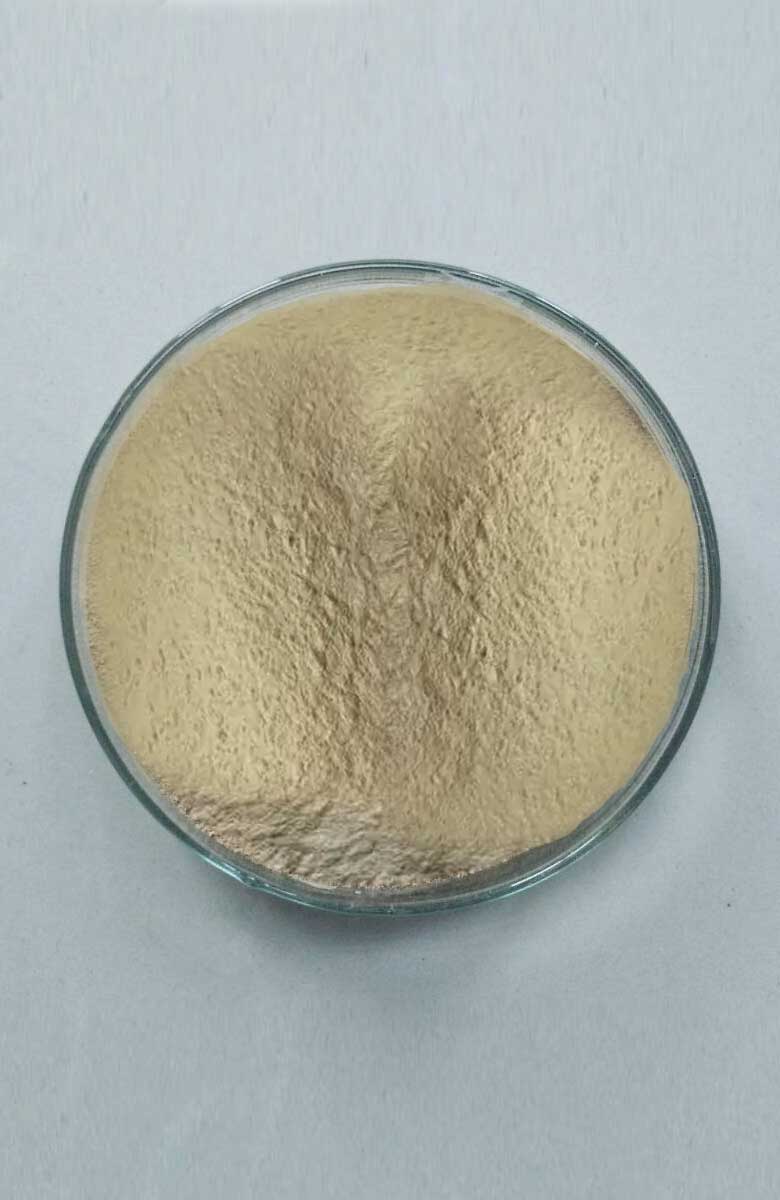Feed Xylanase
Certification: ISO, KOSHER, Halal, HACCP.

Product Information
- Plant source: animals, plants and microorganisms
- Specification: 99%
- Specification: White to yellowish powder
- Mesh size: 80 mesh
- Detection method: UV
- Usage: food, medicine, health care products
- Samples: Provide free samples
- Packaging: 1kg/bag, 25kgs/barrel
What is xylanase?
Xylan is a kind of heterogeneous polysaccharide existing in plant cell wall, accounting for about 15%~35% of the dry weight of plant cells.It is the primary constituent of plant hemicellulose.
The majority of xylans are heterogeneous polysaccharides with a complex structure and high branching that contain a variety of substituents.
Therefore, the biodegradation of xylan requires a complex enzyme system, which degrades xylan through the interaction of various components.
As a result, xylanase is a group of enzymes rather than a single enzyme.
Source of feed xylanase
Xylanase is found naturally and can be obtained from animals, plants, and microorganisms.
For example, xylanase exists in marine and terrestrial bacteria, marine algae, fungi, yeasts, rumen and ruminant bacteria, snails, crustaceans, terrestrial plant tissues and various invertebrates.
Xylanase from microorganism generally exists in nature, and has a wide variety of applications. Therefore, there are many research reports on microbial xylanase.
Bacteria and fungi have recently been the most studied and used xylanase. Among them, bacteria can produce alkaline and acidic xylanase, while fungi can only produce alkaline xylanase.
Among fungi, filamentous fungi secreted the highest extracellular enzymes.
At present, feed xylanase is mainly fermented by microorganisms such as fungi and bacteria
Application
Feed xylanase can decompose raw material cell wall and β- Glucan can reduce the viscosity of materials in brewing, promote the release of effective substances, reduce the non starch polysaccharides in feed grains, promote the absorption and utilization of nutrients, and thus facilitate the extraction of soluble lipids.
What is the role of feeding xylanase?
1. Produce a large number of functional oligosaccharides (xylobiose, xylotriose, etc.) to improve intestinal microflora, which is beneficial to animal health.
2. Feed xylanase can reduce feed product quality fluctuation caused by feed raw material quality variation, stabilize product quality and reduce complaints.
3. Widen the use range of feed raw materials, increase the amount of unconventional feed such as bran, inferior flour, rice bran, etc. in feed, as well as lower the cost of feed formula
4. Feed xylanase can increase the absorption and utilization of nutrients, reduce the discharge of feces, protect the environment, and reduce the stimulation of harmful gases from the decomposition of organic substances in feces to livestock and poultry, so as to reduce the occurrence of respiratory diseases.
Specification
| SPECIFICATION | ||
| Product Name: feed xylanase | Origin of Material: china | |
| Source: animals, plants and microorganisms | ||
| ANALYSIS | SPECIFICATION | REMARK |
| Appearance | white to yellowish powder | |
| Odor | Characteristic | Organoleptic |
| Taste | Characteristic | Organoleptic |
| Sieve Analysis | 95% pass 80 mesh | |
| Loss on Drying | ≤5% | 2 hours at 105°C |
| Bulk Density | 40-60g/100ml | |
| Total Ash | ≤5% | |
| Heavy Metals | ≤10ppm | EP2.4.8 |
| As | ≤1ppm | ICP-MS |
| Pb | ≤3ppm | ICP-MS |
| Microbiological Test | ||
| Total Plate Count | ≤10000cfu/g | |
| Yeast & Mold | ≤1000cfu/g | |
| E.Coli E | Negative | |
| Salmonella | Negative | |
| Storage: In a cool & dry place. Keep away from strong light and heat. | ||
| Shelf Life: 2 years when properly stored. | ||
| * There is likely to be minor color variation from batch to batch due to geographical(origin) and seasonal variations of the material. | ||
